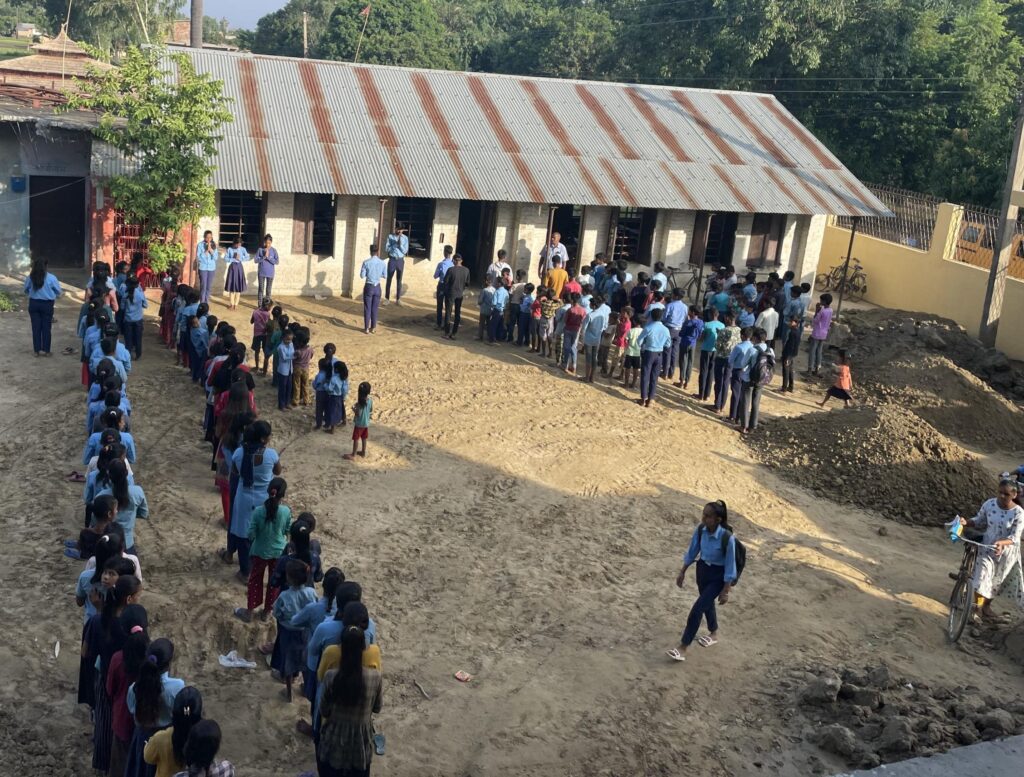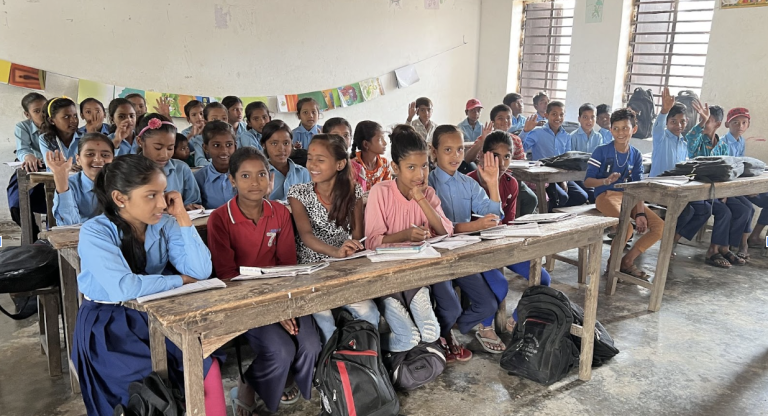
Author: Shreeshna Bajracharya
How do children in rural areas feel about the shelter and environment at their school? Recognizing the importance of understanding their viewpoint, a group of researchers interacted with children in rural settings, especially those attending public schools in the Rautahat district.
As a group of researchers, we traveled to Rautahat, where we conducted focus group discussions (FGD) with students from two rural municipalities: Yamunamai Rural Municipality and Durgabhagwati Rural Municipality, along with one municipality, Rajdevi Municipality. There were nine schools where FGDs with the students were conducted. The information about the environment and shelter of the school is derived from these FGDs. This FGD was a part of the research project “Effectiveness and Scalability of Programs for Children Who Are Out of School and at Risk of Dropping Out in Bangladesh, Bhutan, and Nepal,” supported by Global Partner for Education Knowledge & Innovation Exchange (GPEKIX) and International Development Research Center (IDRC).
We gained valuable insights into the school environment and discovered some significant concerns about safety and security during our recent FGDs with students. While many students expressed a sense of safety and security in their schools, it became clear that there are some serious issues that require immediate attention. One of the alarming issues highlighted by students is the lack of proper fencing or walls around school premises. This glaring absence allows unrestricted access to outsiders, posing a serious threat to the safety of students, which raised concerns among the students. The absence of a secure perimeter jeopardizes the overall safety of students and compromises their well-being.
Another area of concern raised during the focus groups was the lack of safety measures on school playgrounds. Younger students, in particular, are at risk of injury as a result of poorly maintained or unsafe ground surfaces. The lack of safety measures, such as padded surfaces or protective boundaries, increases the likelihood of falls and accidents. The lack of fences on school balconies became a source of concern, particularly among senior students. They expressed genuine concern about younger students falling off balconies while playing or engaging in other activities. The absence of protective barriers in elevated areas poses a serious risk.
Despite prior safety concerns, students expressed appreciation for the positive relationship they have with their teachers. Teachers were widely described as respectful, welcoming, and supportive of their students, fostering a positive learning environment. Teachers treated all students equally, and there was no discrimination based on gender, race, ethnicity, or other factors reported by students. However, some students reported incidents of physical punishment by teachers to enforce discipline. Even in today’s world, where corporal punishment is considered child abuse, it is still in practice in public schools in Rautahat.
From the expressions of students, it has been observed that their responses towards toilet facilities and sanitation are somewhat contradictory. Some students stated that the toilets were clean and had running water along with basic amenities, while others expressed dissatisfaction. The toilets were dirty and unsanitary, as well as having unpleasant odors, with no running water, hand soap, or trash cans. Some schools didn’t even have taps in their toilets. The students usually avoid going to the toilet, but in emergencies, instead of using the restroom, they resort to open defecation. They also stated that because soap is unavailable, they wash their hands with soil. Teachers scolded or ignored students who asked for soap. Students reported encountering dirty toilets. Female students reported higher levels of dissatisfaction with washroom facilities compared to their counterparts. While students were grateful for the presence of a green environment, they also expressed concerns about unsatisfactory classroom conditions, such as the lack of windows and doors and the responsibility they bore for cleaning their own learning spaces.
The environment in which the students are studying needs improvement. Toilets should be managed with the availability of basic amenities, and school infrastructure should be improved. Any form of violence or abuse should be discouraged.



